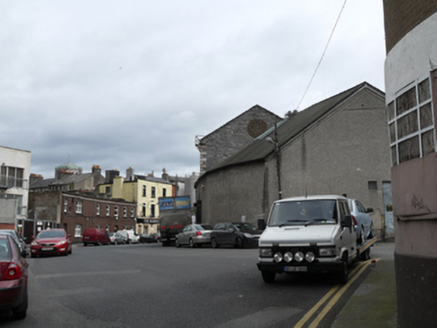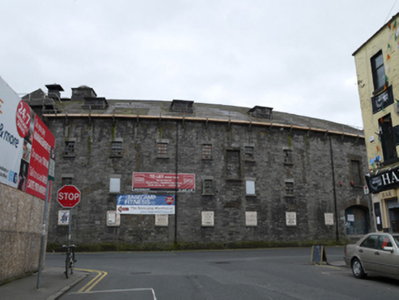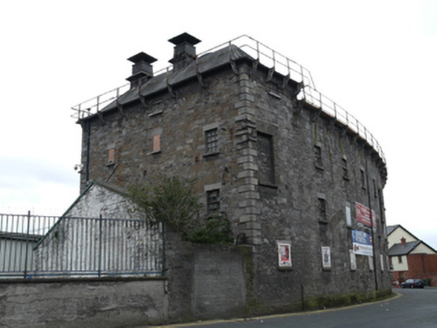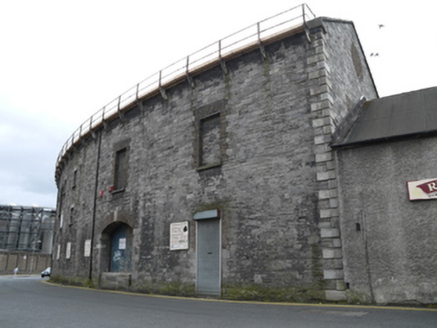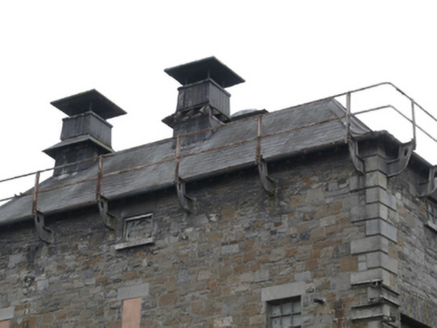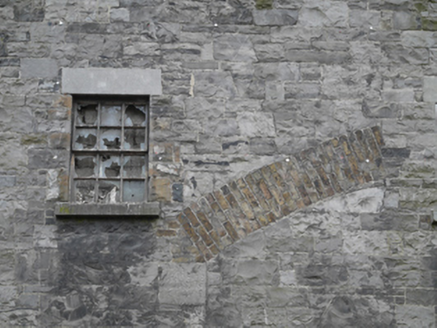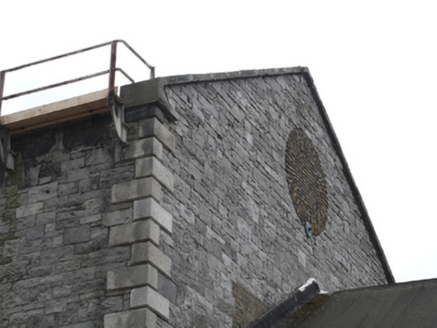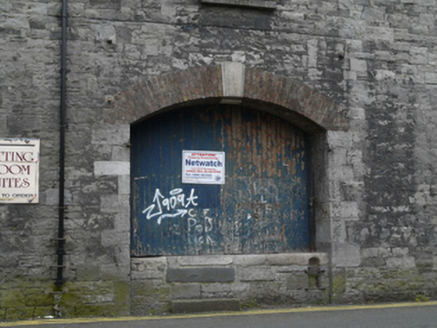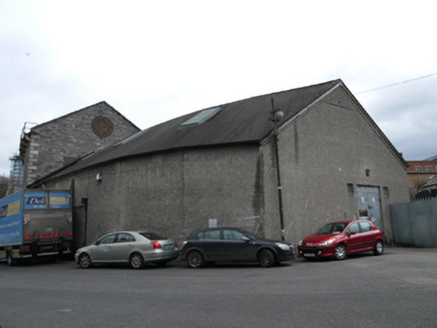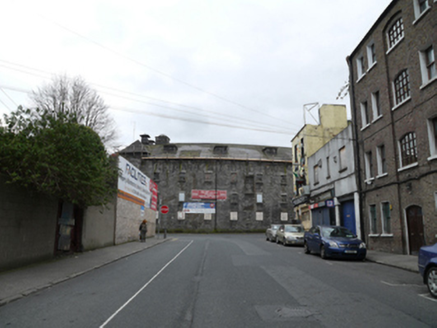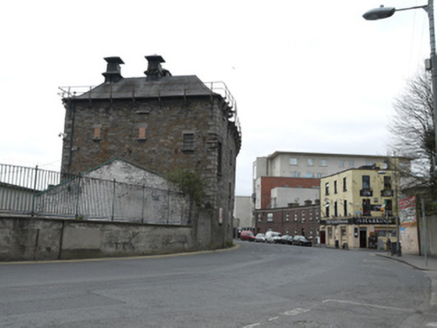Survey Data
Reg No
50080238
Rating
Regional
Categories of Special Interest
Architectural, Historical, Technical
Previous Name
Ryan's World of Furniture
Original Use
Granary
Historical Use
Shop/retail outlet
Date
1840 - 1860
Coordinates
314034, 233785
Date Recorded
03/05/2013
Date Updated
--/--/--
Description
Detached nine-bay three-storey former hop store with dormer attic, built c.1850, having curved front (north) and rear elevations and single-storey extension to west, also built on curved plan. Remodelled as experimental malt house 1901. Later in use as furniture shop, now disused. Pitched slate roof having flat-roofed dormer windows. Hipped roof to east bay, vents to ridge. Access deck at eaves level supported by cast-iron brackets and railings. Pitched asphalt roof to extension. Snecked cut limestone walls having rusticated granite quoins. Roughcast rendered walls to extension. Square-headed window openings having cut limestone lintels and granite sills. Six-over-six pane timber sliding sash windows. Square-headed openings to first floor level having block-and-start brown brick surrounds and granite sills, openings now infilled. Round opening to west gable first floor having brown brick voussoirs, now infilled with brown brick. Segmental-arch opening to ground floor having cut granite block-and-start surround, granite keystone, brown brick voussoirs, timber battened doors, granite sill over cut limestone riser, wrought-iron steps set over recessed arch to riser, wrought-iron handrail to arch reveal. Square-headed door opening having brown brick and limestone surround, recent metal shutter.
Appraisal
An impressive former maltings, its unusual curved form is a reminder of the former Grand Canal Harbour, as it follows the line of the former harbour wall. It also highlights the association of the Guinness brewery with the canal infrastructure. Built as a hop store in the mid-nineteenth century, it was remodelled as an experimental maltings by the Nottingham firm of Brewill and Bailey, with the engineering firm Boby of Bury St. Edmunds. The curved form also adds interest to the surrounding urban landscape. Its scale is emphasised by its siting on high ground on an axis with Echlin Street. Despite its disuse it retains its historic character and fabric, including an interesting pair of wrought-iron steps and a handrail to allow access to the main entrance arch. Construction of the Grand Canal began in 1757, and reached the harbour here in 1785, before it joined the River Liffey at Ringsend in 1797.
